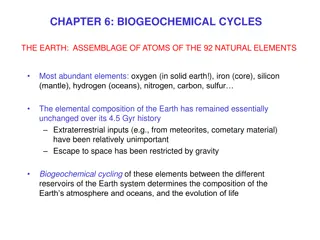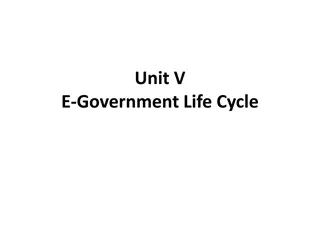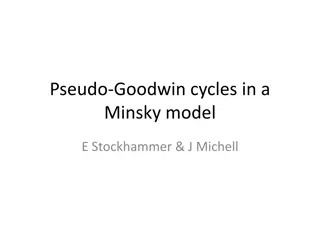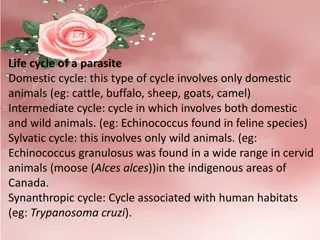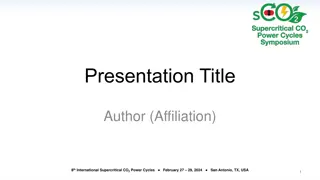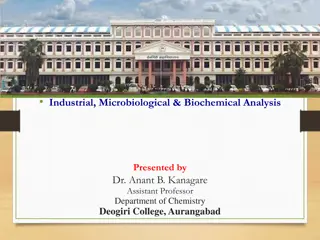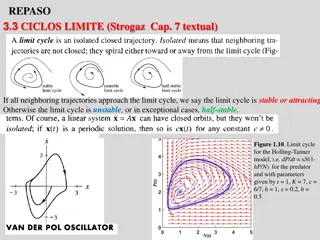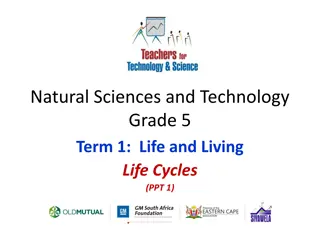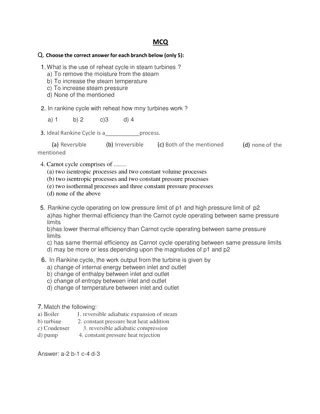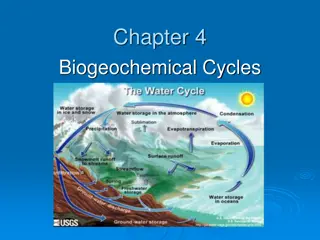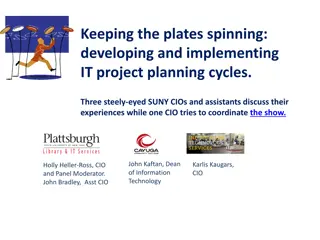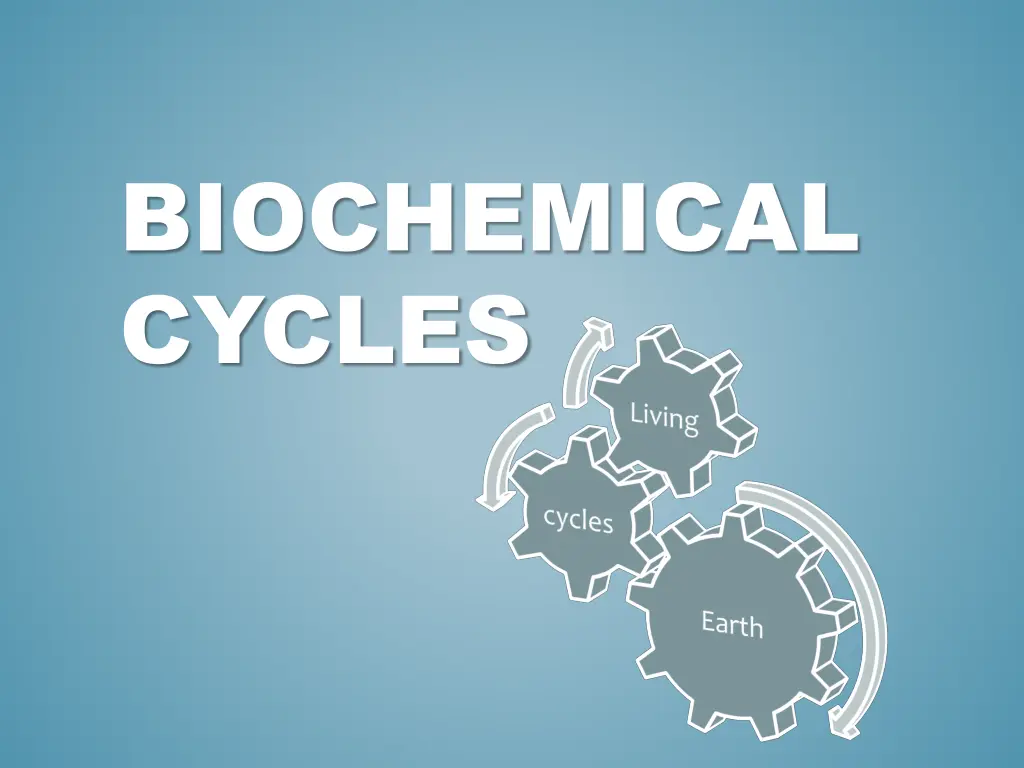
Understanding Biochemical Cycles and Human Impact
Explore the interconnected processes of biochemical cycles such as the carbon, phosphorus, and nitrogen cycles in the biosphere. Learn how human activities influence these cycles and affect the environment. Gain insights into the vital roles these cycles play in sustaining life on Earth.
Download Presentation

Please find below an Image/Link to download the presentation.
The content on the website is provided AS IS for your information and personal use only. It may not be sold, licensed, or shared on other websites without obtaining consent from the author. If you encounter any issues during the download, it is possible that the publisher has removed the file from their server.
You are allowed to download the files provided on this website for personal or commercial use, subject to the condition that they are used lawfully. All files are the property of their respective owners.
The content on the website is provided AS IS for your information and personal use only. It may not be sold, licensed, or shared on other websites without obtaining consent from the author.
E N D
Presentation Transcript
BIOCHEMICAL CYCLES
Biosphere Carbon cycle Phosphorus cycle Nitrogen cycle Water cycle Oxygen cycle Heat in the environment Heat Heat Heat Fig. 3-7, p. 55
CARBON CYCLE 1. CO2 is taken in by plants and photosynthetic aquatic organisms. 2. Plants are eaten by animals 3a. Animals respire and release CO2 into the atmosphere or water. or 3b. Organism dies and CO2 is decomposed and transformed into rock, coal, gas or oil.
EFFECTS OF HUMAN ACTIVITIES ON CARBON CYCLE We alter the carbon cycle by adding excess CO2 to the atmosphere through: Burning fossil fuels. Clearing vegetation faster than it is replaced. Figure 3-28
Phosphorous Cycle
FYI: PHOSPHORUS Bacteria are not as important in the phosphorus cycle as in the nitrogen cycle. Phosphorus is not usually found in the atmosphere or in a gas state only as dust. The phosphorus cycle is slow and phosphorus is usually found in rock formations and ocean sediments. Phosphorus is found in fertilizers because most soil is deficient in it and plants need it. Phosphorus is usually insoluble in water and is not found in most aquatic environments.
EFFECTS OF HUMAN ACTIVITIES ON THE PHOSPHOROUS CYCLE We remove large amounts of phosphate from the earth to make fertilizer. We reduce phosphorous in tropical soils by clearing forests. We add excess phosphates to aquatic systems from runoff of animal wastes and fertilizers.
STEP 1: STEP 1: NITROGEN FIXATION NITROGEN FIXATION This is the first step of the nitrogen cycle where specialized bacteria convert gaseous nitrogen to ammonia(NH4 + ) that can be used by plants. This is done by cyanobacteria or bacteria (Rhizobium) living in the nodules on the root of various plants.
STEP 2: STEP 2: NITRIFICATION NITRIFICATION Ammonia is converted to Nitrite then to Nitrate Step 3: Assimilation Step 3: Assimilation Plant roots absorb ammonium ions and nitrate ions for use in making molecules such as DNA, amino acids and proteins.
STEP 4: AMMONIFICATION After nitrogen has served its purpose in living organisms, decomposing bacteria convert the nitrogen-rich compounds, wastes, and dead bodies into simpler compounds such as ammonia.
STEP 5: STEP 5: DENITRIFICATION DENITRIFICATION Nitrate ions and nitrite ions are converted into nitrous oxide gas and nitrogen gas. This happens when a soil nutrient is reduced and released into the atmosphere as a gas.
EFFECTS OF HUMAN ACTIVITIES ON THE NITROGEN CYCLE Human activities such as production of fertilizers now fix more nitrogen than all natural sources combined. Figure 3-30
EFFECTS OF HUMAN ACTIVITIES ON THE NITROGEN CYCLE We alter the nitrogen cycle by: Adding gases that contribute to acid rain. Adding nitrous oxide to the atmosphere through farming practices which can warm the atmosphere and deplete ozone. Contaminating ground water from nitrate ions in inorganic fertilizers. Releasing nitrogen into the troposphere through deforestation.
THE SULFUR CYCLE Figure 3-32
EFFECTS OF HUMAN ACTIVITIES ON THE SULFUR CYCLE We add sulfur dioxide to the atmosphere by: Burning coal and oil Refining sulfur containing petroleum. Convert sulfur-containing metallic ores into free metals such as copper, lead, and zinc releasing sulfur dioxide into the environment.

